NPs Basic Information
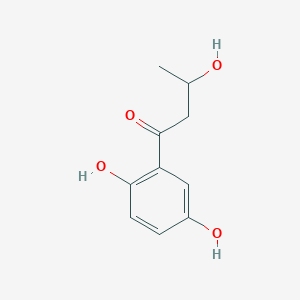
|
Name |
1-(2,5-Dihydroxyphenyl)-3-hydroxybutan-1-one
|
| Molecular Formula | C10H12O4 | |
| IUPAC Name* |
1-(2,5-dihydroxyphenyl)-3-hydroxybutan-1-one
|
|
| SMILES |
CC(CC(=O)C1=C(C=CC(=C1)O)O)O
|
|
| InChI |
InChI=1S/C10H12O4/c1-6(11)4-10(14)8-5-7(12)2-3-9(8)13/h2-3,5-6,11-13H,4H2,1H3
|
|
| InChIKey |
WKQRFNCVSZBUJJ-UHFFFAOYSA-N
|
|
| Synonyms |
1-(2,5-dihydroxyphenyl)-3-hydroxybutan-1-one; ACon1_000971; BS-1382; NCGC00169800-01; 1-(2,5-Dihydroxyphenyl)-3-hydroxy-1-butanone; BRD-A05219849-001-01-1
|
|
| CAS | NA | |
| PubChem CID | 23789031 | |
| ChEMBL ID | NA |
*Note: the IUPAC Name was collected from PubChem.
Chemical Classification: |
|
|
|---|
——————————————————————————————————————————
NPs Species Source
| Endophyte ID | Endophyte Name | Family | Genus | Taxonomy ID | GenBank ID | Closest GenBank ID | Reference | |
|---|---|---|---|---|---|---|---|---|
| Endophyte ID | Endophyte Name | Family | Genus | Taxonomy ID | GenBank ID | Closest GenBank ID | Reference |
NPs Biological Activity
| Bioactivity Name | Target ID | Target Name | Target Type | Target Organism | Target Organism ID | Potency of Bioactivity | Activity Type | Value | Unit | Endophyte ID | Endophyte Name | |
|---|---|---|---|---|---|---|---|---|---|---|---|---|
| Bioactivity Name | Target ID | Target Name | Target Type | Target Organism | Target Organism ID | Potency of Bioactivity | Activity Type | Value | Unit | Endophyte ID | Endophyte Name |
NPs Physi-Chem Properties
| Molecular Weight: | 196.2 | ALogp: | 1.1 |
| HBD: | 3 | HBA: | 4 |
| Rotatable Bonds: | 3 | Lipinski's rule of five: | Accepted |
| Polar Surface Area: | 77.8 | Aromatic Rings: | 1 |
| Heavy Atoms: | 14 | QED Weighted: | 0.505 |
——————————————————————————————————————————
NPs ADMET Properties*
ADMET: Absorption
| Caco-2 Permeability: | -4.715 | MDCK Permeability: | 0.00001040 |
| Pgp-inhibitor: | 0.001 | Pgp-substrate: | 0.974 |
| Human Intestinal Absorption (HIA): | 0.012 | 20% Bioavailability (F20%): | 0.776 |
| 30% Bioavailability (F30%): | 0.018 |
——————————————————————————————————————————
ADMET: Distribution
| Blood-Brain-Barrier Penetration (BBB): | 0.063 | Plasma Protein Binding (PPB): | 39.56% |
| Volume Distribution (VD): | 1.139 | Fu: | 62.89% |
——————————————————————————————————————————
ADMET: Metabolism
| CYP1A2-inhibitor: | 0.054 | CYP1A2-substrate: | 0.677 |
| CYP2C19-inhibitor: | 0.053 | CYP2C19-substrate: | 0.124 |
| CYP2C9-inhibitor: | 0.023 | CYP2C9-substrate: | 0.935 |
| CYP2D6-inhibitor: | 0.03 | CYP2D6-substrate: | 0.78 |
| CYP3A4-inhibitor: | 0.013 | CYP3A4-substrate: | 0.213 |
——————————————————————————————————————————
ADMET: Excretion
| Clearance (CL): | 14.985 | Half-life (T1/2): | 0.867 |
——————————————————————————————————————————
ADMET: Toxicity
| hERG Blockers: | 0.031 | Human Hepatotoxicity (H-HT): | 0.11 |
| Drug-inuced Liver Injury (DILI): | 0.046 | AMES Toxicity: | 0.044 |
| Rat Oral Acute Toxicity: | 0.42 | Maximum Recommended Daily Dose: | 0.695 |
| Skin Sensitization: | 0.799 | Carcinogencity: | 0.053 |
| Eye Corrosion: | 0.059 | Eye Irritation: | 0.876 |
| Respiratory Toxicity: | 0.074 |
——————————————————————————————————————————
*Note: the ADMET properties was calculated by ADMETlab 2.0. Reference: PMID: 33893803.
Similar Compounds*
Compounds similar to EMNPD with top10 similarity:
| Similar NPs | Similar Drugs | ||||||
|---|---|---|---|---|---|---|---|
| NPs ID | NPs 2D Structure | Similarity Score | TTD ID | Drug 2D Structure | Similarity Score | ||
| ENC003828 | 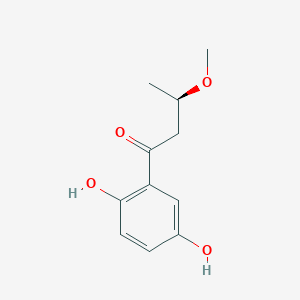 |
0.711 | D0C4YC |  |
0.404 | ||
| ENC000097 | 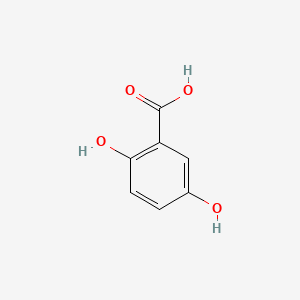 |
0.610 | D08HVR | 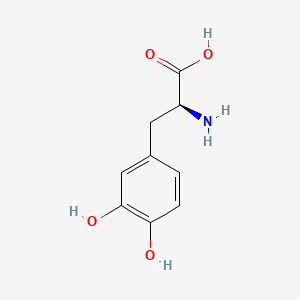 |
0.396 | ||
| ENC000344 |  |
0.610 | D04PHC | 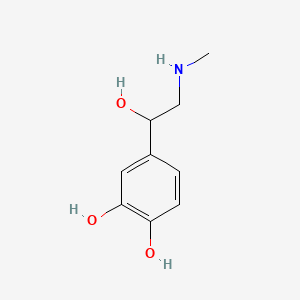 |
0.385 | ||
| ENC002350 | 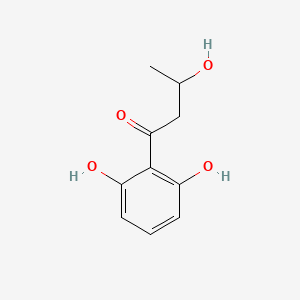 |
0.574 | D0BA6T | 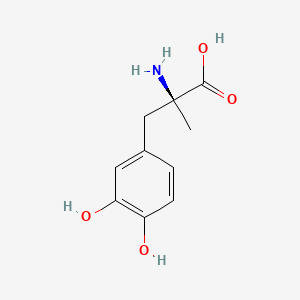 |
0.382 | ||
| ENC002913 |  |
0.532 | D0I3RO | 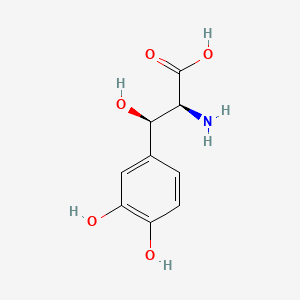 |
0.382 | ||
| ENC004178 | 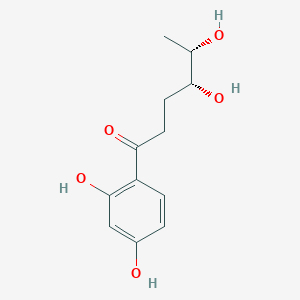 |
0.519 | D07MOX | 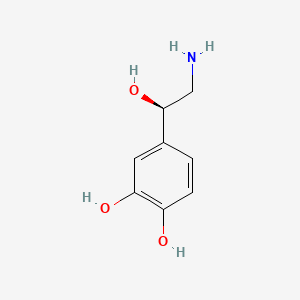 |
0.380 | ||
| ENC000069 | 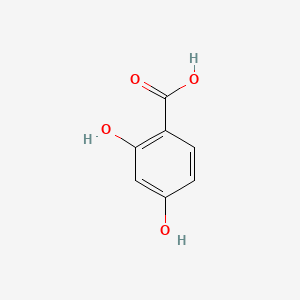 |
0.500 | D0U0OT | 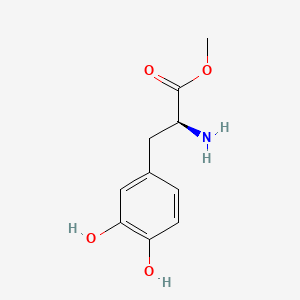 |
0.375 | ||
| ENC000985 | 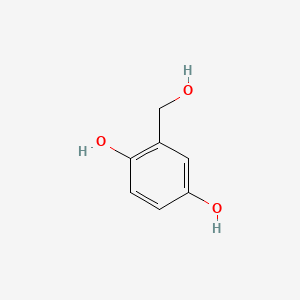 |
0.455 | D0I8FI | 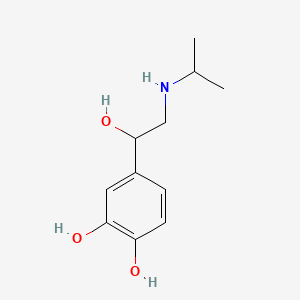 |
0.375 | ||
| ENC000696 |  |
0.422 | D0YF3X |  |
0.373 | ||
| ENC004146 | 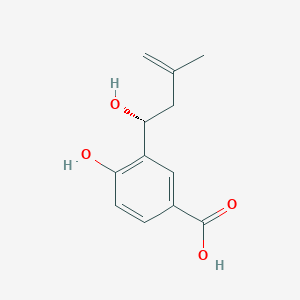 |
0.411 | D0P7JZ | 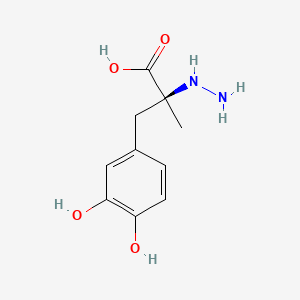 |
0.362 | ||